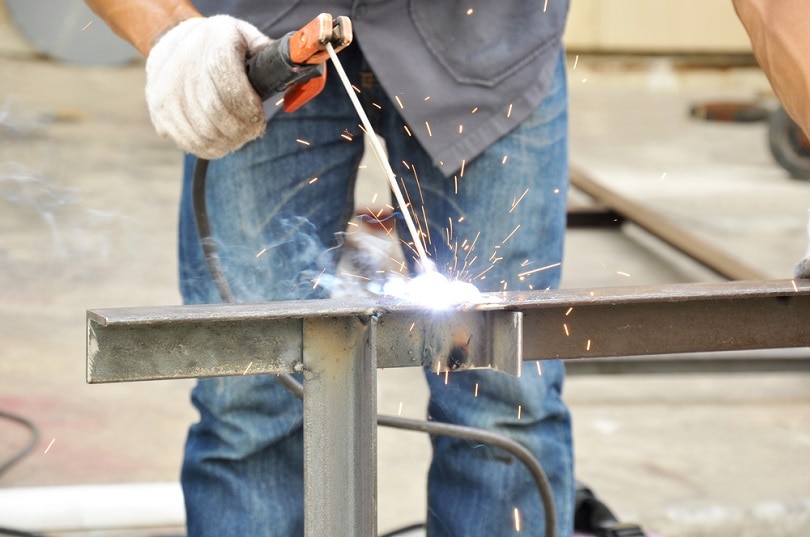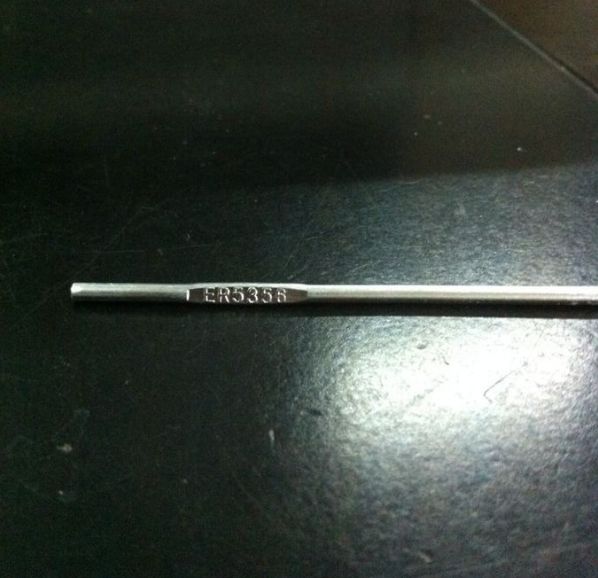What type of welding rod is used for aluminum?
Aluminum welding poses unique challenges due to the metal’s low melting point and high thermal conductivity. Selecting the appropriate welding rod is crucial for achieving strong, reliable welds. In this guide, we will delve into the various types of welding rods used for aluminum welding, considering factors such as alloy type, welding technique, and specific project requirements.

Understanding Aluminum Alloys:
Aluminum alloys are available in diverse formulations, each tailored to manifest distinct attributes like strength, resistance to corrosion, and ease of welding. Among the prevalent aluminum alloys, 4043 and 5356 stand out as the most frequently encountered.
1. 4043 Aluminum Welding Rods:

– Composition: 4043 welding rods contain 5% silicon, making them suitable for welding castings and extrusions.
– Applications: Ideal for welding alloys like 6061 and 6063, commonly used in structural applications.
– Characteristics: Offers excellent fluidity and penetration, with minimal sensitivity to weld cracking.
2. 5356 Aluminum Welding Rods:

– Composition: 5356 rods have 5% magnesium, providing increased strength and crack resistance.
– Applications: Suited for welding marine components and other applications requiring high corrosion resistance.
– Characteristics: Produces welds with higher tensile strength, making it a preferred choice for critical structural joints.
Choosing the Right Diameter:
Selecting the appropriate diameter for the welding rod is crucial for achieving optimal weld quality. Welding rods made of aluminum are commonly found in sizes spanning 1/16 inch to 1/8 inch, with smaller diameters being suitable for thinner materials and larger diameters being preferable for thicker sections.
Welding Techniques for Aluminum:
Aluminum’s unique properties require specialized welding techniques to ensure successful and high-quality welds. Consider the following techniques when working with aluminum:
1. AC (Alternating Current) Welding:

– AC welding is commonly used for aluminum due to its ability to handle the material’s high thermal conductivity.
– The alternating current helps break through the oxide layer on the aluminum surface, allowing for better penetration.
2. Polarity:
– Use reverse polarity (DC electrode positive) when welding aluminum. This helps with cleaning the oxide layer and promoting better arc stability.
3. Preheating:
– Preheating the aluminum workpiece can be beneficial, especially when working with thicker sections. This reduces thermal stress and promotes better fusion.
4. Joint Preparation:
– Ensure proper joint preparation, including cleaning and removing any oxide layers. This is critical for achieving sound welds.
Specific Project Considerations:
Different welding rods may be more suitable for specific projects based on the application and environmental factors. Consider the following scenarios:
1. Structural Welding:

– For structural applications, where strength and reliability are paramount, 5356 welding rods are often preferred.
2. Marine Applications:
– When working on marine components exposed to corrosive environments, 5356 rods offer enhanced corrosion resistance.
3. General Purpose Welding:
– For general-purpose welding where versatility is essential, 4043 rods are a reliable choice.
Conclusion:
Selecting the right welding rod is a critical step in ensuring successful aluminum welding projects. Understanding the properties of different aluminum alloys, considering the welding technique, and factoring in specific project requirements are key elements in making an informed choice. Whether applied in structural endeavors, marine undertakings, or diverse welding tasks, the meticulous selection of a suitable welding rod significantly enhances the strength and endurance of welds. As technological strides persist, it remains imperative for welders to stay abreast of the latest innovations in aluminum welding materials and methodologies. This continual pursuit of knowledge ensures an ongoing enhancement of their skills, enabling the consistent delivery of superior and enduring workmanship.
READ MORE: WHAT IS BUTTON HEAD SCREWS , AND PROPERTIES , APPLICATIONS
READ MORE: How to start a new startup business on Deepawali 2023




